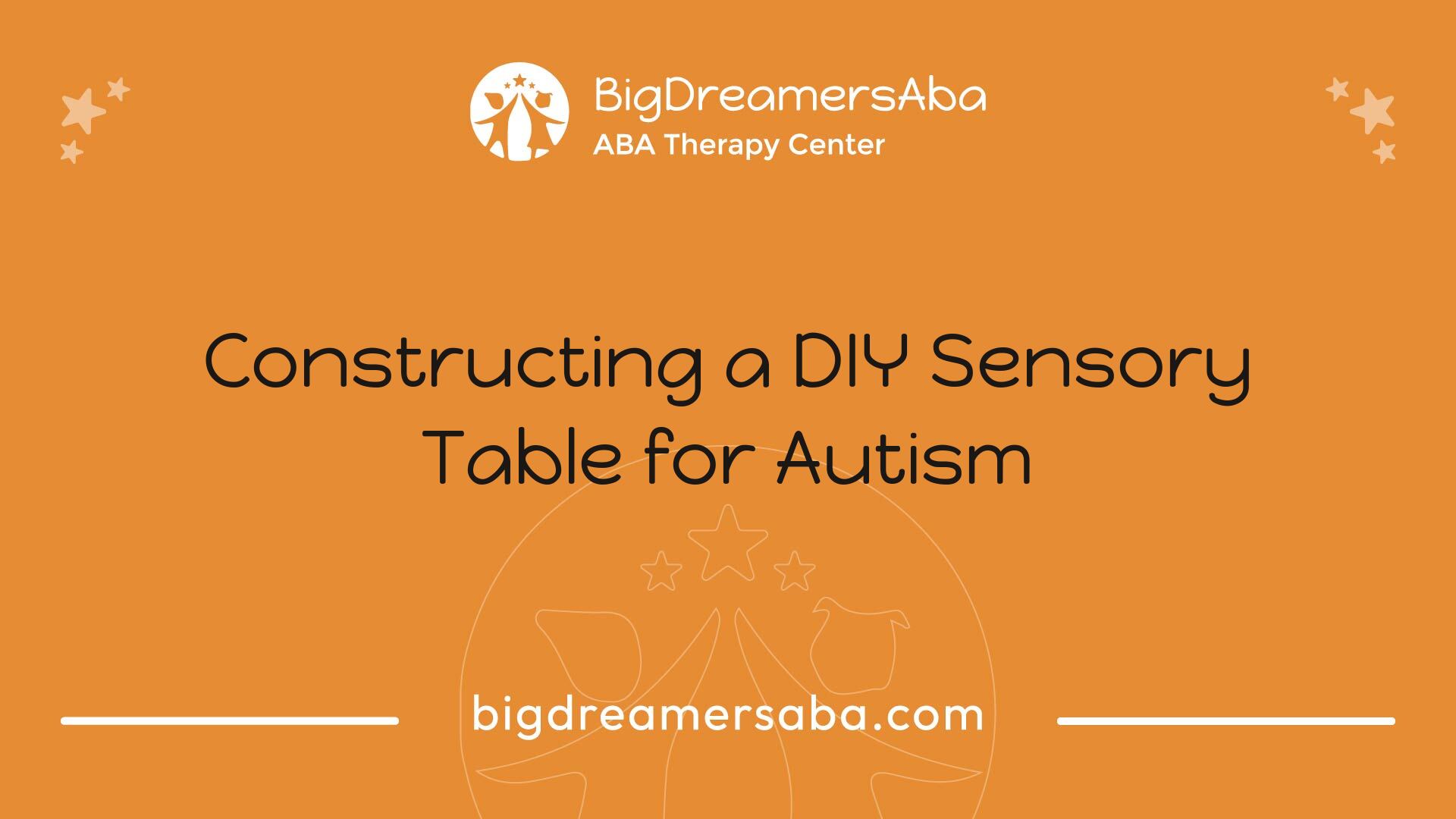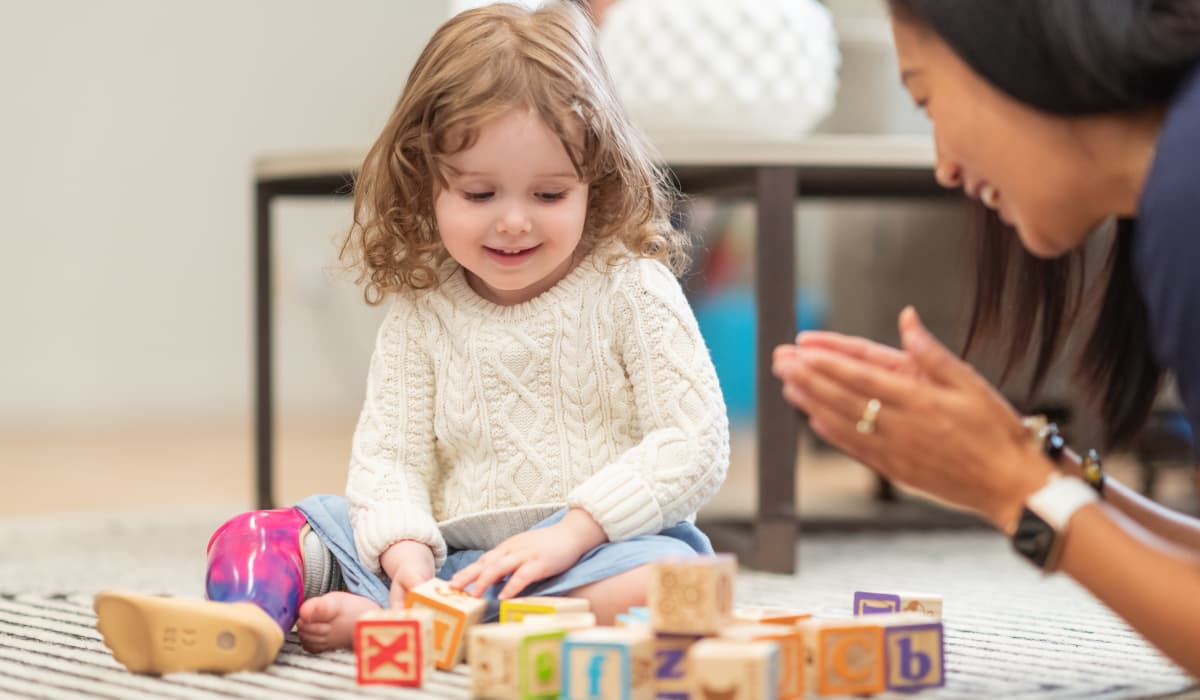Constructing a DIY Sensory Table for Autism
Create a DIY sensory table for autism that engages and supports sensory play for enhanced development!


Understanding Sensory Play
Importance of Sensory Play
Sensory play is crucial for individuals with autism as it aids in developing and refining their sensory processing abilities. This kind of play helps regulate sensory responses and provides the opportunity to adapt to various sensory experiences. Engaging in sensory activities allows individuals to explore and learn in a safe and structured environment.
With sensory tables, children can interplay different sensory elements, leading to effective coping strategies and better emotional regulation. Sensory play promotes comfort and familiarity with diverse textures and materials, which is especially important for those who may struggle with certain sensory modalities.
Benefits for Individuals with Autism
Engaging in sensory activities offers numerous benefits for individuals with autism, particularly children aged 4-12 years. Research indicates that sensory tables serve as effective tools in supporting sensory exploration, cognitive development, and emotional well-being, enhancing the overall quality of life for the individuals involved [2].
Key benefits of sensory play for individuals with autism include:
BenefitDescriptionSensory StimulationProvides opportunities for visual, tactile, and auditory engagement, helping individuals become more comfortable with different sensory inputs.Cognitive DevelopmentEncourages problem-solving skills and creativity through exploratory play.Emotional RegulationHelps alleviate anxiety and promotes positive behavior by providing a calming outlet for sensory seeking behaviors.Improved Sensory ProcessingEnhances sensory integration skills, allowing individuals to better transition between various sensory experiences [3].
By constructing a DIY sensory table for autism, caregivers can create an engaging environment. Incorporating various sensory materials and elements customized to individual needs will optimize the sensory experiences and provide enriching opportunities for growth and learning.

DIY Sensory Tables for Autism
Creating a DIY sensory table for autism can provide an engaging and therapeutic environment for children on the autism spectrum. Such tables allow for exploration and creativity, which are essential for sensory integration and cognitive development.
Sensory Table Ideas
When designing a sensory table, there are numerous ideas that can be tailored to the individual preferences and needs of children. Here are a few engaging concepts:
Sensory Table IdeaDescriptionFresh Herb TableThis table includes various herbs such as mint, basil, and rosemary. It provides a multi-sensory experience through touch, smell, and even taste, promoting exploration and creativity.Moon Dough TableUtilizing moon dough (a soft, moldable substance made from flour, oil, and water), this table allows for creative play. Children can mold and shape the dough, enhancing their fine motor skills while exploring different textures.Mud and Bugs TableIncorporating dirt and plastic bugs, this setup gives children the chance to dig and uncover hidden treasures. It creates an engaging tactile experience, which can promote sensory integration and imaginative play.
For more sensory table inspiration, check out our list of sensory table ideas for autism.
Building a Safe DIY Table
Safety is a priority when constructing a DIY sensory table. Here are some important considerations for building a secure and functional sensory table:
When creating a sensory-friendly space, it's vital to maintain an atmosphere that fosters exploration and minimizes sensory overload. For supportive tools and techniques, visit our articles on creating a sensory-friendly environment and managing sensory overload in autism.
By making a DIY sensory table, parents and caregivers can provide a valuable resource that not only entertains but also supports the growth and development of children with autism through meaningful play experiences.

Sensory Materials for Tables
Creating a DIY sensory table for autism involves selecting the right materials that offer varied sensory experiences. These materials can enhance engagement and stimulate exploration among individuals with autism. The following sections highlight stimulating textures and engaging materials suitable for sensory tables.
Stimulating Textures
Textures play a vital role in sensory play, providing tactile experiences that cater to individual preferences. Incorporating a range of textures can help engage individuals and encourage exploration. Here are some popular options:
MaterialTexture DescriptionBenefitsWaterWet and fluidCalming; promotes sensory playSandGritty and moldableEncourages tactile explorationRiceFine and grainyOffers a unique feelIce CubesCold and smoothStimulates temperature sensitivityBeansFirm and variedFacilitates motor skillsFabric SwatchesSoft and variedEncourages exploration of textures
These diverse materials not only provide different sensory experiences but also aid in developing fine motor skills and cognitive abilities. Using materials like rice, beans, or water can create a rich, engaging environment, allowing for creative play and learning [4].
Engaging Materials
In addition to textures, the selection of engaging materials can further enhance the sensory experience. Combining various items can keep the play area interesting and stimulating. Here are some engaging material ideas for sensory tables:
MaterialDescriptionPurposeToys and figurinesSmall, themed figuresEncourages imaginative playShaving creamSoft, fluffy textureSensory explorationBubble wrapBubbly and tactilePromotes fine motor skillsSensory ballsTextured or squishy ballsEnhances sensory feedbackMirrorsReflective surfacesEncourages visual explorationBeads and buttonsColorful and varied sizesPromotes sorting and counting
These materials not only provide sensory stimulation but also help with social interactions. Encouraging group play with diverse materials allows for shared experiences while fostering communication [3]. Selecting the right combination of textured and engaging items is essential for creating a captivating and beneficial sensory table experience. For more sensory table ideas, visit our page on sensory table ideas for autism.

Sensory Integration and Development
Engaging in sensory play, particularly through a DIY sensory table for autism, is not only fun but also instrumental in fostering sensory integration and development. This type of play helps individuals refine their sensory processing abilities, adapt to sensory experiences, and promotes various skills critical to their growth.
Promoting Fine Motor Skills
Fine motor skills, which involve the use of small muscles in the hands and fingers, are essential for day-to-day tasks. Sensory play provides children with opportunities to practice these skills in a natural setting. For example, activities involving pouring, scooping, or picking up small objects enhance dexterity and coordination.
Fine Motor ActivityDescriptionSkill DevelopedPouringTransferring water or sand between containersHand-eye coordinationScoopingUsing a spoon to move materials like rice or beansGrip strengthPicking UpGrabbing small objects like beads or buttonsPinching ability
Incorporating a range of sensory materials in the table, such as rice, sand, and water, offers diverse textures that necessitate varied hand movements, further promoting fine motor development.
Enhancing Cognitive Abilities
Sensory play is also beneficial for cognitive development. Engaging with different textures and materials stimulates the brain and can enhance focus and problem-solving skills. When children explore sensory materials, they ask questions, make predictions, and engage in imaginative play, all of which encourage cognitive growth.
Cognitive SkillBenefitExample ActivityProblem-SolvingDeveloping strategies to manipulate objectsFiguring out how to get a toy out of iceLanguage SkillsEnhancing vocabulary through new experiencesDescribing textures and actionsAttention SpanImproving focus through hands-on activitiesPlaying with different sensory materials
Creating a sensory table tailored to the unique needs and preferences of individuals can cater to their specific developmental goals. For more ideas on establishing an engaging environment, explore our sensory table ideas for autism and consider how it can be a resource for cognitive engagement.
Combining various sensory experiences not only enriches playtime but also reinforces the progress of fine motor and cognitive abilities in a manner that is engaging and effective.

Water-Based Sensory Tables
Water-based sensory tables provide a dynamic and engaging way to promote sensory play for children with autism. They offer a multi-sensory experience that can significantly enhance learning and emotional regulation.
Benefits of Water Play
Engaging in water play has numerous benefits for children with autism. It can stimulate multiple senses including touch, sight, sound, movement, and even taste. This multi-sensory experience aids in the development of sensory processing skills, which in turn enhances a child’s ability to interpret and respond to sensory information effectively. Some key benefits include:
BenefitDescriptionCognitive SkillsWater play promotes problem-solving, decision-making, and critical thinking skills by encouraging exploration and experimentation [5].Calming EffectsThe sensory experience associated with water play can have a calming effect, promoting sensory integration and reducing sensitivities [6].Improved FocusActivities with water tables can lead to better engagement in activities and classroom settings, resulting in a decrease in behavior referrals [6].Safety AwarenessWater play can also incorporate safety education, essential for children with autism, who are at a higher risk for drowning. Teaching water safety can be critical [5].
Creating a Water Sensory Table
Setting up a water sensory table requires careful consideration to enhance the sensory experience while ensuring safety. Here are steps to create a DIY water sensory table for autism:
By implementing these ideas, parents and caregivers can create a rich and inviting water-based sensory experience. This DIY sensory table for autism not only promotes play but also aids in emotional and cognitive development.
Tailoring Sensory Experiences
Creating a DIY sensory table for autism involves customizing the sensory experience to meet individual needs and preferences. Tailoring these experiences allows for optimized engagement and developmental benefits for individuals with autism.
Customizing for Individual Needs
Each child on the autism spectrum has distinct sensory requirements. Customizing the sensory table involves evaluating and selecting materials that cater to these specific needs. A well-thought-out approach can enhance the effectiveness of the sensory table.
ConsiderationCustomization OptionsSensory RegulationInclude calming materials like water or sand.Engagement LevelChoose vibrant colors and interactive elements to stimulate interest.Physical AbilitiesAdjust table height and materials to ensure accessibility.Learning ObjectivesIntegrate educational elements such as shapes or colors to promote learning.
DIY sensory tables can provide an environment where children with autism can explore stimuli safely, leading to reduced anxiety and improved emotional regulation. This adaptive approach encourages children to express themselves and interact meaningfully with their surroundings.
Incorporating Sensory Preferences
Including specific sensory preferences in the design of a sensory table is crucial for enhancing the effectiveness of the experience. Knowledge of what types of textures, colors, and materials appeal to an individual can guide the setup.
Sensory PreferenceSuggested MaterialsTactile SensitivityIncorporate rice, beans, or textured objects.Visual StimulationUse colorful, shiny, or light-reflective materials.Auditory EngagementAdd elements that make noise, such as bells or water features.Olfactory ConsiderationInclude scented materials or flavored water for taste and smell experiences.
By accommodating these preferences, caregivers and educators can empower individuals with autism to engage fully in their play [3]. This level of customization not only supports sensory exploration but also fosters learning and social interactions within a safe and controlled environment, enhancing overall development.
Creating a tailored sensory experience encourages exploration and provides essential opportunities for self-expression. The materials selected can help engage individuals meaningfully in activities designed for their unique sensory needs. To explore more ideas about what sensory materials to include, check out additional resources like sensory table ideas for autism and understanding sensory processing issues in autism.
References
[2]:
[3]:
[4]:
[5]:
[6]:
[7]:
Recent articles

ABA Techniques for Picky Eaters: Building Better Habits

How Social School Support Makes School Transitions Easier for Children
